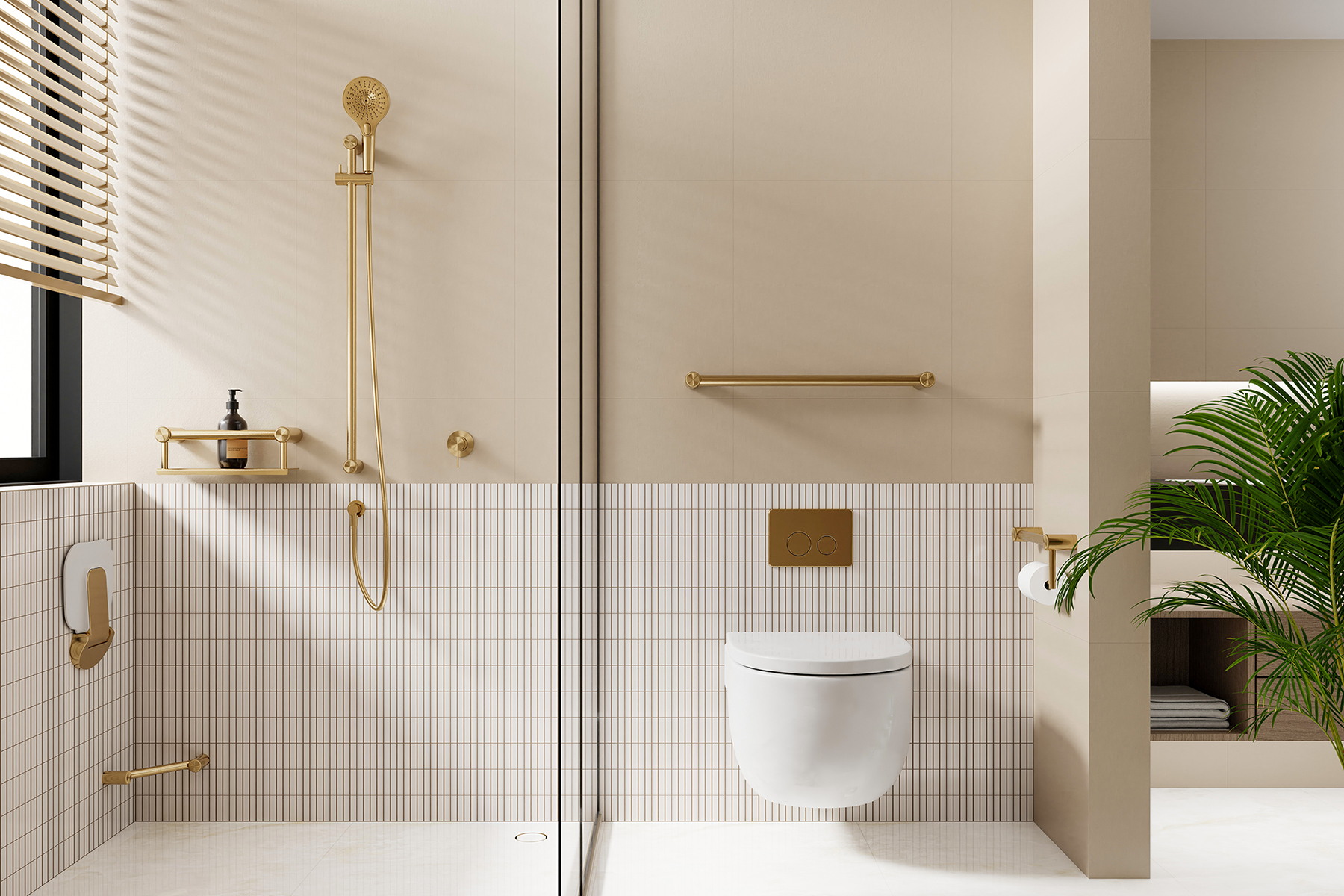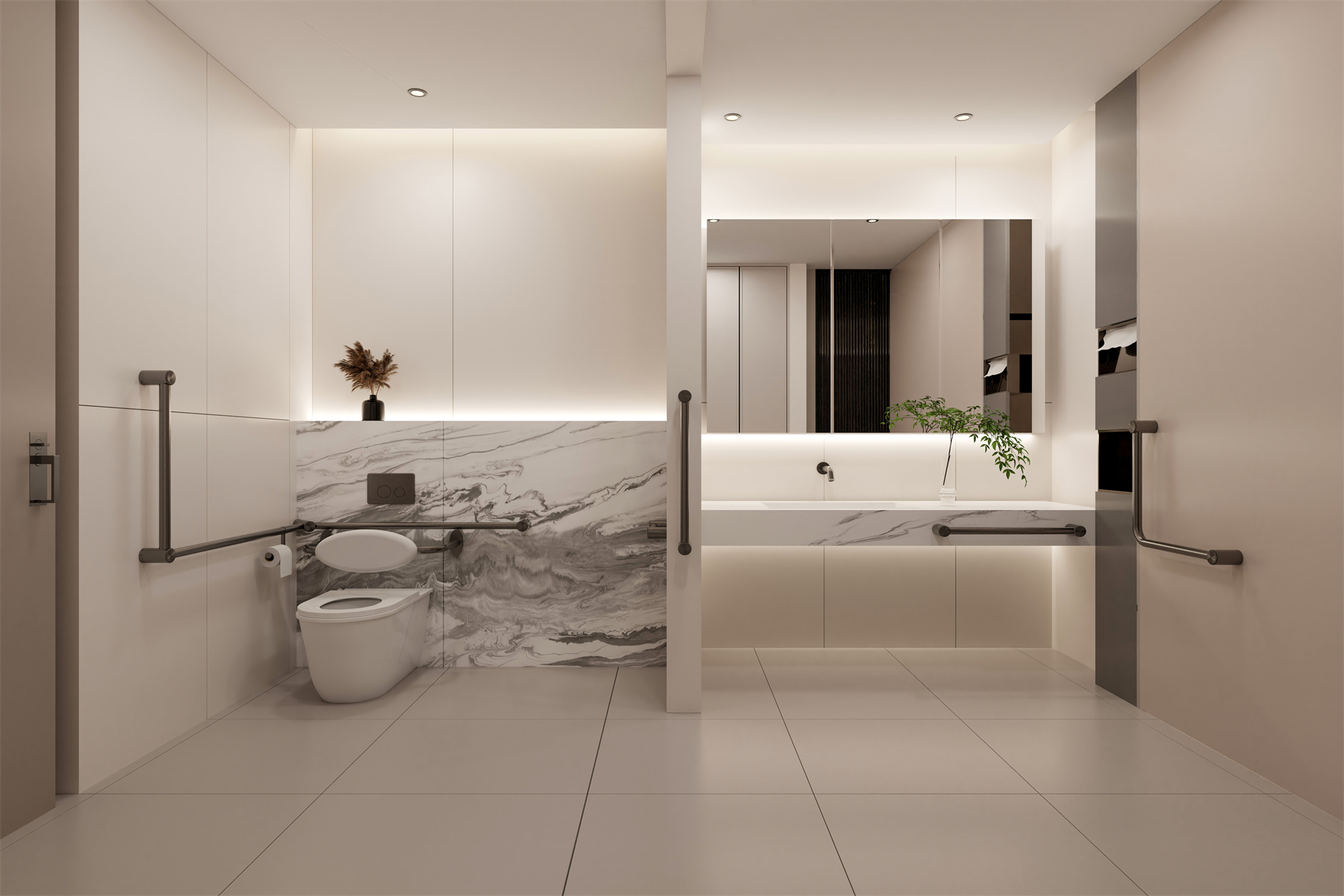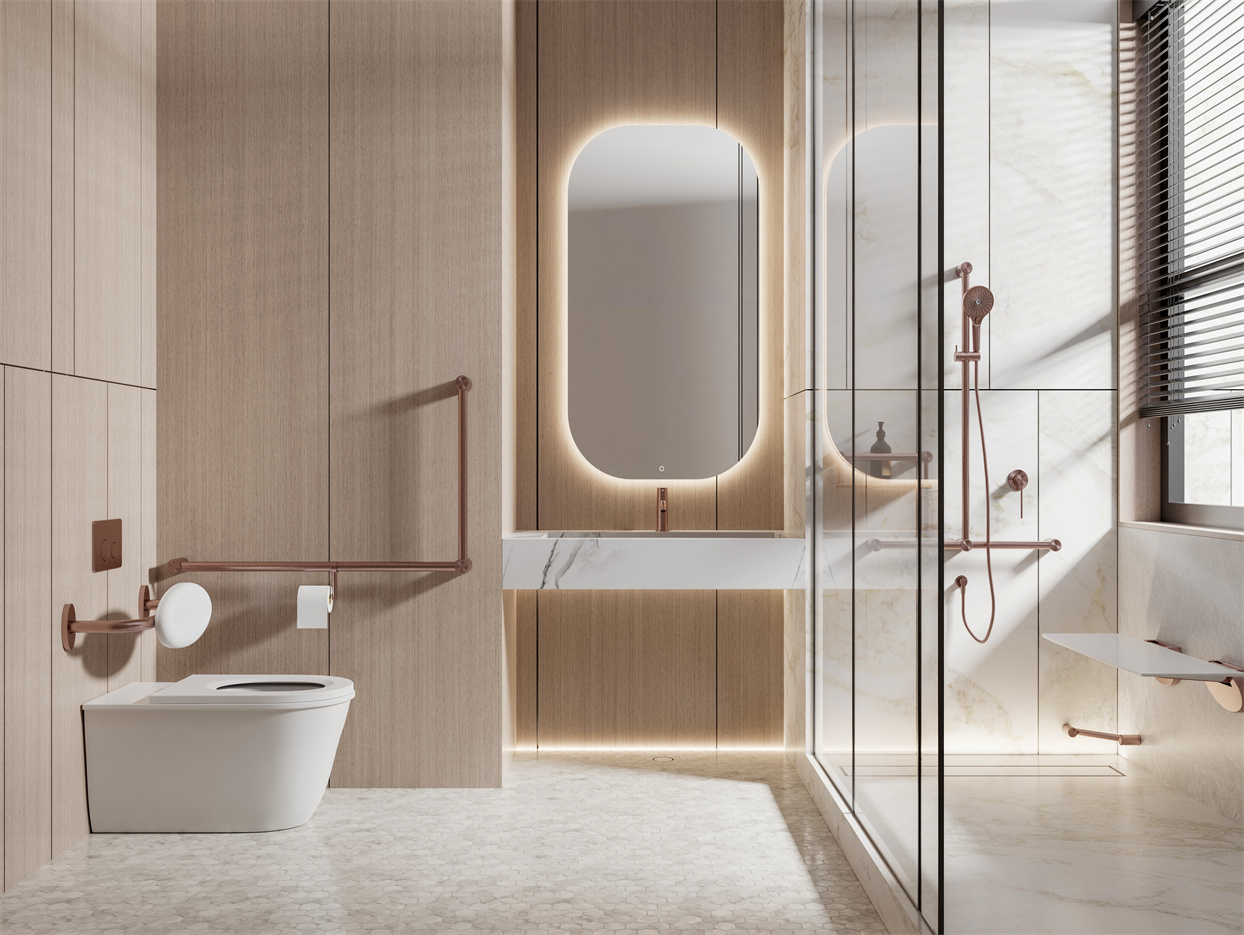Designing Livable Spaces Without Compromising Function or Style
INTRODUCTION
Accessible living spaces are becoming increasingly important as the majority of Australians, both with and without disabilities, have a desire to stay in their current homes rather than enter residential aged care. A survey conducted by Anglicare Australia found that, out of 500 older people surveyed across Australia, 87% wanted to remain at home as they grow older.
To make ‘ageing in place’ work, homes need to be accessible for all users, especially for people who may need healthcare in the home and those with mobility issues, including the potential use of equipment such as specialised beds, wheelchairs, walkers, and other devices. This fact is now recognised in building regulations, with upcoming changes to the National Construction Code (NCC) requiring the provision of care fit offs in new homes and renovations. Equally as important, public and commercial spaces must also consider a slew of accessibility measures to adequately cater to Australia’s growing ageing population.
By modifications to our built environment, architects and designers can promote usability, participation in activities, and enable older users to live comfortably and independently. There are a range of solutions available, with some of the most common including grab rails, shower seats, easy-to-use fixtures, and wheelchair ramps and stairlifts.
The influence of aesthetics in the adoption of care products, as well as its impact on health and wellbeing, is often underestimated. Care products are typically associated with a bland, clinical aesthetic that can actually contribute to stress rather than reduce it. Accessibility modifications in homes, workplaces and other public spaces can be more effective if designers pay attention not only to functionality and ease of use, but also user satisfaction and style.
In this whitepaper, we navigate the new livable housing design requirements in the NCC and discuss the importance of aesthetics when recommending accessible design features.

NEW STANDARDS FOR LIVABLE HOMES
Australia’s older generation—those 65 and older—continues to increase in both size and percentage of the population. By 2042, it is expected that there will be over a million Australians who are 85 years of age or older, more than doubling the current number. At the same time, there are over 4.4 million people in Australia who have some form of disability.
In light of these statistics, the dearth of new homes being built with useful accessibility features has been a persistent concern. Designing livable housing involves modifying how
we build houses to make them more user-friendly and adaptable to occupants’ changing needs. In practice, this entails eliminating steps whenever possible, creating more room in the bathroom, enlarging doorways, and making accommodations for future care modifications like the installation of grab rails.
Minimum accessibility specifications for livable housing and apartments are incorporated in the 2022 edition of the NCC. The requirements were modeled after the Silver criteria listed in the Liveable Housing Design Guidelines, which were published by Liveable Housing Australia. This means that new homes under NCC 2022 are required to include step-free access from street and parking areas; a minimum of one step-free entrance into the residence; interior doors and corridors that allow for easy access; a first-floor toilet; a step-less shower; reinforced lavatory walls to facilitate grab rail installation; continuous handrails for staircases; and other accessibility features.
The addition of these requirements to the NCC will lay the groundwork for more livable homes for all people and support their ability to stay in their current residences for longer periods of time without having to move or spend a significant amount of money upgrading their home with assistive products.
“Accessibility modifications in homes, workplaces and
other public spaces can be more effective if designers
pay attention not only to functionality and ease of use,
but also user satisfaction and style.”
AESTHETIC APPEAL OF ACCESSIBLE PRODUCTS
Designers must take into account both functionality and aesthetics when creating livable spaces. While usability is important for user adaptation, aesthetics are crucial for a positive user perception and acceptance.
Research has demonstrated that aesthetic appeal plays an important role in acceptance and uptake of assistive technology. A 2016 pilot study that aimed to understand the importance of aesthetics on the intention to purchase assistive technology, using grab rails as the example, showed that consumers prefer aesthetically-appealing grab rails. Both appealing and unappealing grab rails were described using positive and negative terms related to aesthetics, but at least five participants thought that all grab rails had negative aesthetic qualities.6 The study highlights that bathroom suppliers are severely lacking in attractive, functional bathroom products for older and/or mobility-challenged users.
The lack of acceptance of assistive care products can cause injuries for homeowners because they will not be proactive in upgrading their living spaces. Instead of installing grab rails proactively during a renovation, end users may choose to wait until they sustain an injury from falling in the bathroom.
The market offers a wide variety of grab rails, but the majority of these products have a clinical appearance when installed in a home. Although grab rails are crucial in reducing the number of bathroom slips and falls, they have a negative connotation when installed in private residences because they are perceived as hospital or institutional products. This stigma, which is solely attributable to the design’s aesthetics, may make users decide not to install these devices at all, putting many seniors and families at risk.
This negative perception can extend to commercial spaces as well. In restaurants and hotels, accessible bathrooms that appear outdated, low quality or aesthetically unappealing compared to the rest of the building will reflect poorly on the establishment in the eyes of guests and customers.

“A livable home must not only be efficient and
multifunctional, but it must also be personable
—it must ‘feel’ like home.”
HOW AESTHETICS IMPACT WELLBEING
Numerous studies link the physical design and aesthetics of the environment to the health and wellbeing of patients and residents. In a study assessing patients recovering from neurological disease, for example, aesthetic elements were shown to facilitate the experience of being at home and safe, which is wanted by patients in their attempt to find relief during hospitalisation.
Patients are unable to relax in traditional healthcare settings because of their drab color schemes, confined rooms, and poor acoustics. Instead of lowering stress, these disruptive elements are increasing it. The design of the space, the colours of the walls, pieces of art, furniture and fixtures, all contribute to patients’ feelings of security and comfort and help them to stay in a positive frame of mind.
Aesthetics play an important role when it comes to ‘ageing in place’. Identity is very much connected to the home, which encapsulates a person’s personal history, family dynamics, memories, and their aesthetic preferences. A livable home must not only be efficient and multifunctional, but it must also be personable—it must ‘feel’ like home. The presentation of the home thus plays an important role in older people’s wellbeing and serves as an important counterpoint to the clinical look and feel of traditional healthcare and aged care facilities.
These principles should be front of mind when specifying accessible products. With a lack of colour matching, finishes and styling options, the clinical design of many grab rails, shower seats, and similar accessories means they are often segregated from other ‘conventional’ fixtures. This results in the end users of such products feeling undervalued, neglected and uncared for. Instead of being useful bathroom accessories, grab rails turn off homeowners because they draw attention to the fact that they are intended for ‘disabled’ people rather than an integral component of the space itself.
NERO COMBINES ACCESSIBILITY, FUNCTIONALITY AND STYLE
Solutions for the home, workplace, hotel or public bathroom
When it comes to assistive fixtures, you immediately think of bulky grab rails, exposed fixings, bent tubes and a lack of matching colours and finishes. Today’s owners are looking for accessible options that abandon the clinical style that highlights ill health and ‘mobility issues’, and instead want bathroom practicality and clever design.
Nero have collaborated with Australian designers from Avail Designs to create a range that is both compliant to standards and fits in with the latest Australian bathroom design trends, including colour-matching grab rails withthe most popular tapware designs, like the much-loved Mecca collection.
Nero offers options to suit both commercial projects approved to AS1428.1 standard along with a more subtle range to win over homeowners who are future proofing. Accessories are combined with support features making the products multi-functional, such as an adjustable shower rail that is also a grab rail, a grab rail with a builtin toilet roll holder, and weight-bearing towel rails. This new range creates a practical functional bathroom that looks beautiful, which is what older homeowners looking to live independently in their own home are looking for.
Nero combine safety with style to create dignified, safer homes
The Nero range of bathroom grab rails and seats increase safety, maintain independence and deliver dignity in private homes, workplaces, accommodation and public bathrooms.
This range includes shower seats, tapware, grab rails and accessories that are approved by a NATA-accredited test lab to meet all requirements for AS1428.1 for use in public
Ambulant (walking) and DDA (wheelchair accessible) showers and toilets (sanitary facilities). DDA bathrooms are designed for ambulant and wheelchair users in public sanitary spaces (showers and toilets).
The commercial range focuses on ensuring the accessible bathroom is just as attractive as standard rooms. The modular design allows the rails to be retrofitted easily into existing bathrooms without having to reinforce walls, and the rails can be easily cut to size during installation.
Products are available in a wide range of the most popular trending finishes, including:
• Chrome
• Matt Black
• Gun Metal
• Brushed Nickel
• Brushed Gold
• Brushed Bronze
Nero can help you create accessible and beautiful bathroom solutions that are aesthetically beautiful and effortlessly functional. For help with independent living, aged care, specialist disability accommodation, hotels and commercial hospitality projects, contact Nero today.


























